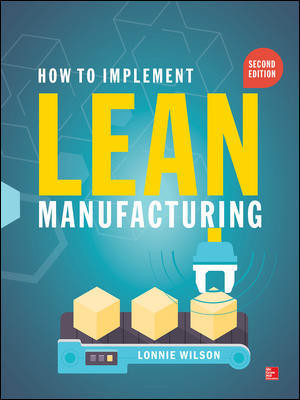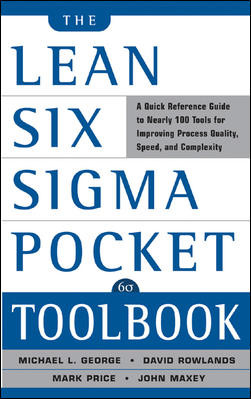Leading Lean: Lead Yourself to Lean
Lean is continuous improvement, so it's no surprise that the body of lean knowledge has evolved by leaps and bounds, and will certainly continue expanding indefinitely. Where is lean headed? Examining three current trends in lean will shed light on this question and, more importantly, help you add to your skills as a lean leader. Remember, lean is NOT a fad du jour. You're leading lean to improve your business continuously over the long haul, not to be on the leading edge.
The first trend-lean accounting-might actually be called red hot. The rationale is that as companies get effective at implementing the first slice of lean, they run into more challenges with traditional accounting systems. By the first slice of lean, I mean basic elements like building a flowing value stream while reducing overproduction and inventory.
There are two reasons why lean accounting has become a notable topic in the past several years. First, as inventory is reduced drastically, the deferred costs embedded in that inventory land on the bottom line, often for a loss if lean is implemented rapidly. Second, the available costing information is not well-suited for recognizing the effects of the disaggregated decision-making that gives teams more ownership and responsibility for their area. For deeper insight, my favorite book on the subject is Real Numbers by Cunningham and Fiume. There is also the 2nd annual Lean Accounting Summit being held in Orlando, FL, this month.
The second trend-lean product development-is an absolutely vital topic that has struggled for several years to gain real momentum. The ability to manufacture and assemble a product effectively and efficiently will be meaningless unless it is a product that customers will buy. In fact, much of the waste throughout a supply chain is generated from the decisions made during product development.
Organizations that attempt to apply lean manufacturing to product development often fail because product development is a very different process than manufacturing. In manufacturing, you seek a single path, with smooth and focused flow, and to get it right the first time. But, in product development, you use multiple paths to explore different options. Product development does best when a team can work through multiple iterations in a planned way to maximize learning.
Applying lean successfully in product development requires a fresh look at how to apply lean principles. Lean emphasizes eliminating waste, but it is very important to keep in mind that eliminating waste must be secondary to the heart of product development-adding value for the customer. Several books that offer comprehensive insight into this subject are Product Development for the Lean Enterprise by Kennedy and Toyota Product Development System by Morgan and Liker.
The third trend in lean is organizations helping themselves. The proliferation of lean knowledge and the availability of helpful books and tools, mixed with a strong entrepreneurial spirit, have inspired more and more companies to embark on lean journeys on their own. While visiting many of these companies, I've observed both good-and not-so-good-effects from this trend. The good news is that these companies are no longer focused on the fear of something new; they are focused on owning their own success. The downside is that they often make expensive and time-consuming mistakes without experienced guidance.
Any program or tool can fail, and even become dangerous, when adopted at the extreme. Neither "do-it-all-yourself," nor turning to an outsider and saying "please lead us, we will follow," is the way to launch your journey to lean. A mix of inside leadership with outside help and experience can be a powerful combination for achieving the continuous improvement you seek. Outsiders can not lead for you. They can only help. You must lead yourself.
Jamie Flinchbaugh is a founder and partner of the Lean Learning Center in Novi, MI, and the co-author of The Hitchhiker's Guide to Lean: Lessons from the Road. He shares his successful and varied experiences of lean transformation as a practitioner and leader through companies such as Chrysler and DTE Energy. He also has a wide range of practical experience in industrial operations, including production, maintenance, material control, product development and manufacturing engineering. Jamie is a graduate fellow of the Leaders for Manufacturing Program at the Massachusetts Institute of Technology, where his research thesis was on implementing lean manufacturing through factory design. He also holds a B.S. in Engineering from Lehigh University in Bethlehem, PA, and an M.S. in Engineering from the University of Michigan. To contact Jamie directly, go to the web site www.leanlearningcenter.com.
Looking for a reprint of this article?
From high-res PDFs to custom plaques, order your copy today!





